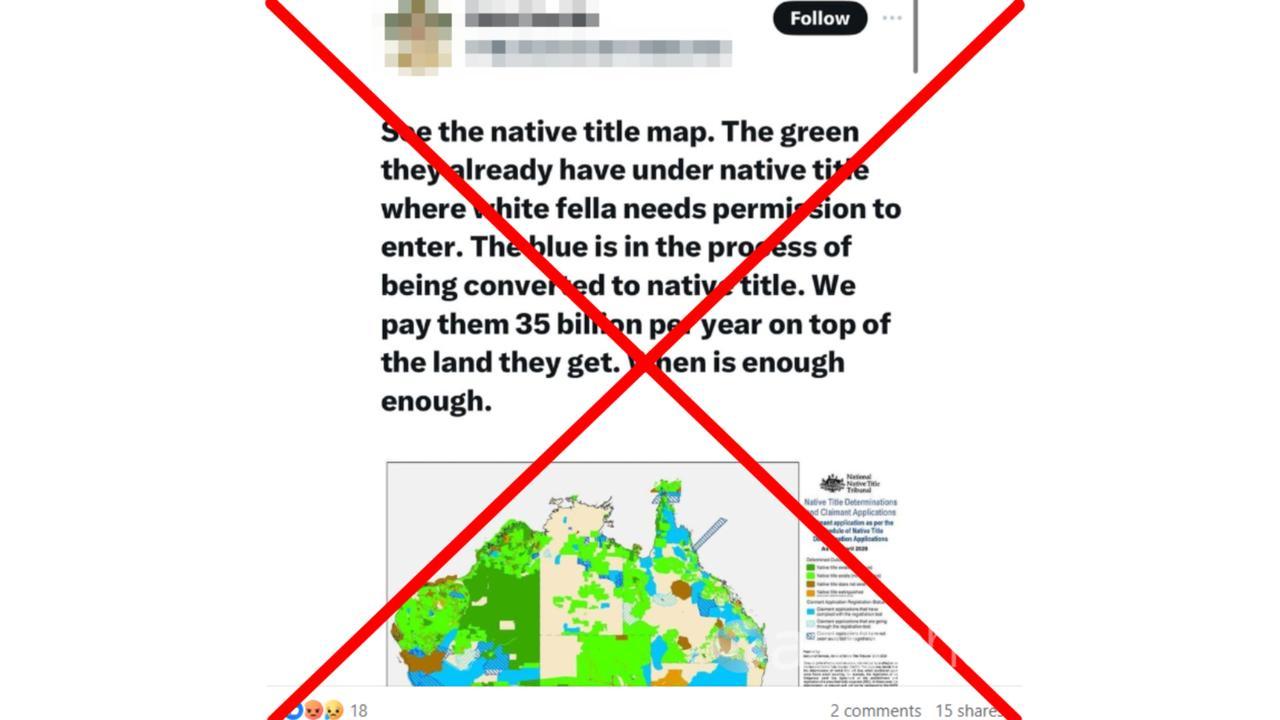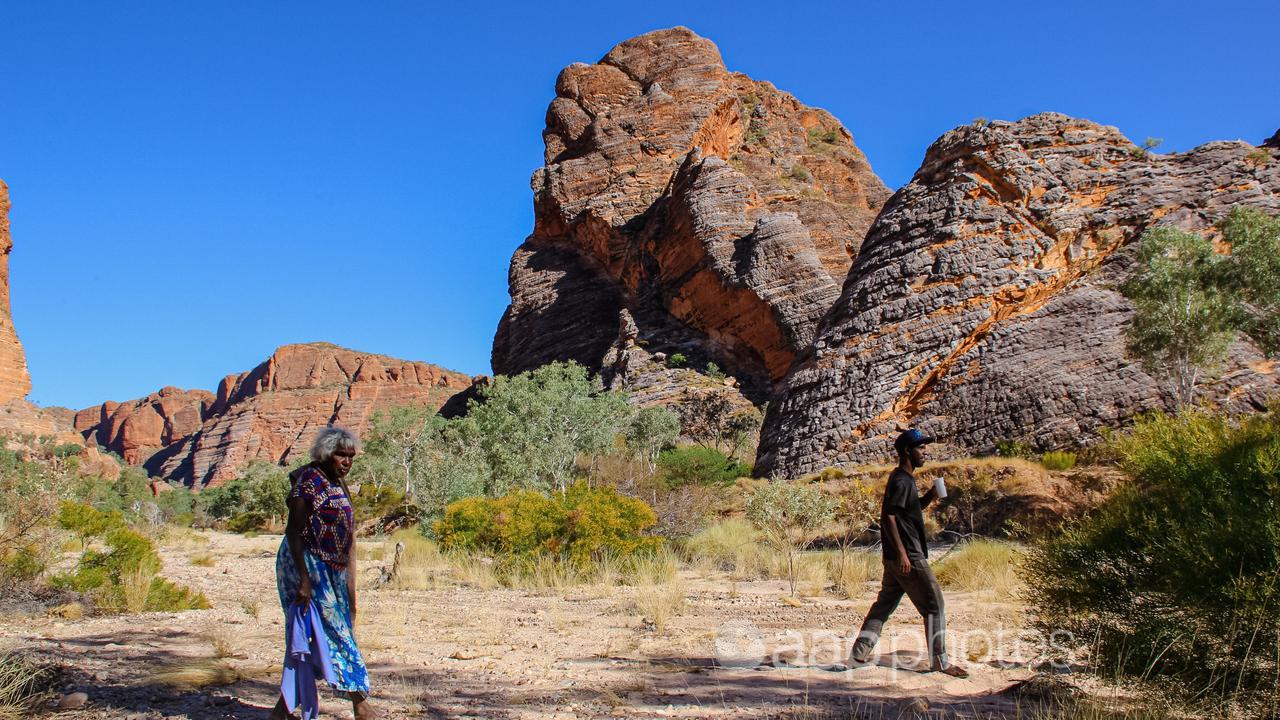Non-indigenous people need permission to enter native title land in Australia, social media users are claiming.
This is mostly false. Indigenous people do not have the power to exclude for the majority of native title land. Where they do, this land is largely in remote Western Australia.
The post being shared shows a 2020 version of the National Native Title Tribunal’s map of title lands and claims – the latest version of which can be seen here.

“See the native title map. The green they already have under native title where white fella needs permission to enter,” states the accompanying text, originally posted on X on March 21.
“The blue is in the process of being converted to native title. … When is enough enough.”
The user is correct in stating that land shaded green is native title. However, he fails to distinguish between the dark green (exclusive native title) and light green (non-exclusive native title).
As of April 1 2024, non-exclusive native title made up 66 per cent of all native title.
Associate Professor Sean Brennan, a native title expert at UNSW Sydney, told AAP FactCheck in a 2023 interview that it is wrong to suggest non-exclusive native title equates to control or ownership.
Rather, he said, non-exclusive status allows local Indigenous people rights to access land to hunt, fish and camp on traditional country.
“But not the right to control access to, and use of, an area,” he added.
Dr Leon Terrill, a land rights expert also at UNSW Sydney, concurred but said permission may be required from others.
“Where non-exclusive native title co-exists with a pastoral lease, which is widespread, outsiders may need permission from the pastoralist,” Dr Terrill said.

He described exclusive native title, which makes up 34 per cent of the total, as being similar to other private property in that the owners have a right to exclude or welcome non-owners, notably both Indigenous and non-Indigenous.
He explained that there is a third category of Indigenous land, which comes under the umbrella of statutory land rights. This land is largely situated in remote South Australia and the Nothern Territory (NT) and generally requires a permit system for access.
“Simplifying a little, in the NT an Aboriginal person ‘who is entitled by Aboriginal tradition to enter onto an area of Aboriginal land’ may do so. Other people need a permit, though there are a range of exceptions,” Dr Terrill said.
Addressing a similar claim in August 2023, experts told AAP FactCheck that Indigenous people “owned or controlled” around 30 per cent of Australia. This figure takes into account statutory land rights and exclusive native title.
The Verdict
The claim that white people need permission to enter native title land in Australia is mostly false.
Indigenous people do not have powers to exclude others from non-exclusive native title – which makes up 66 per cent of all native title.
However, permission may be needed from others, for example pastoralists.
Mostly False – The claim is mostly inaccurate but includes minor elements of truth.
AAP FactCheck is an accredited member of the International Fact-Checking Network. To keep up with our latest fact checks, follow us on Facebook, Twitter and Instagram.
All information, text and images included on the AAP Websites is for personal use only and may not be re-written, copied, re-sold or re-distributed, framed, linked, shared onto social media or otherwise used whether for compensation of any kind or not, unless you have the prior written permission of AAP. For more information, please refer to our standard terms and conditions.


















